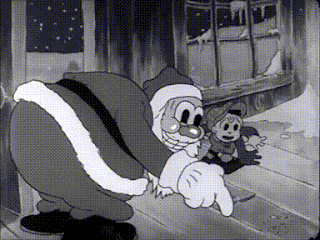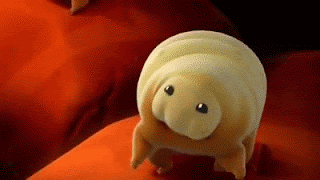It had been more than a decade since "B.T." had last seen anything.
After she suffered a traumatic accident as a young woman, doctors diagnosed her with cortical blindness, caused by damage to the visual processing centres in her brain. So she got a Seeing Eye dog to guide her and grew accustomed to the darkness.
Besides, B.T. had other health problems to cope with — namely, more than 10 wildly different personalities that competed for control of her body.
It was while seeking treatment for her dissociative identity disorder that the ability to see suddenly returned. Not to B.T., a 37-year-old German woman. But to a teenage boy she sometimes became.
With therapy, over the course of months, all but two of B.T.'s identities regained their sight. And as B.T. oscillated between identities, her vision flicked on and off like a light switch in her mind. The world would appear, then go dark.
Writing in PsyCh Journal, B.T.'s doctors say that her blindness wasn't caused by brain damage, her original diagnosis. It was instead something more akin to a brain directive, a psychological problem rather than a physiological one.
B.T.'s strange case reveals much about the mind's extraordinary power — how it can control what we see and who we are.
To understand what happened with B.T. (who is identified only by her initials in the journal article), her doctors, German psychologists Hans Strasburger and Bruno Waldvogel, went back to her initial diagnosis of cortical blindness.
Her health records from the time show that she was subjected to a series of vision tests — involving lasers, special glasses, lights shined across a room — all of which demonstrated her apparent blindness. Since there was no damage to her eyes themselves, it was assumed that B.T.'s vision problems must have come from brain damage caused by her accident (the report does not say what exactly happened in the accident).
Waldvogel had no reason to doubt that diagnosis when B.T. was referred to him 13 years later for treatment of dissociative identity disorder, once called multiple personality disorder. B.T. exhibited more than 10 personalities, varying in age, gender, habits and temperament. They even spoke different languages: some communicated only in English, others only in German, some in both. (B.T. had spent time in an English-speaking country as a child but lived in Germany.)
Then, four years into psychotherapy, something strange happened: just after ending a therapy session, while in one of her adolescent male states, B.T. saw a word on the cover of a magazine. It was the first word she had read visually in 17 years.
At first, B.T.'s renewed sight was restricted to recognizing whole words in that one identity. If asked, she couldn't even see the individual letters that made up the words, just the words themselves. But it gradually expanded, first to higher-order visual processes (like reading), then to lower-level ones (like recognizing patterns) until most of her personalities were able to see most of the time. When B.T. alternated between sighted and sightless personalities, her vision switched as well.
That's when Waldvogel began doubting the cause of B.T.'s vision loss. It's unlikely that a brain injury of the kind that can cause cortical blindness would heal instantaneously after such a long time. And even if it did, that didn't explain why B.T.'s vision continued to switch on and off. Clearly something else was going on.
One explanation, that B.T. was "malingering," or lying about her disability, was disproved by an EEG test. When B.T. was in her two blind states, her brain showed none of the electrical responses to visual stimuli that sighted people would display — even though B.T.'s eyes were open and she was looking right at them.
Instead, Waldvogel and Strasburger believe that B.T.'s blindness is psychogenic (psychologically caused, rather than physical). Something happened — perhaps related to her accident — that caused her body to react by cutting out her ability to see. Even now, two of her identities retain that coping mechanism.
"These presumably serve as a possibility for retreat," Strasburger told the neuroscience site Brain Decoder. "In situations that are particularly emotionally intense, the patient occasionally feels the wish to become blind, and thus not 'need to see.'"
It's not actually all that uncommon for people's brains to stop them from seeing, even when their eyes work fine, the researchers say. When your two eyes see slightly different images — when squinting, for example — the brain will cut out one image to keep you from being confused by the contradiction. Your brain also intervenes in visual processing when you focus on particular objects in your field of vision.
Responsibility for the information "gatekeeping" that kept B.T. from seeing everything she looked at may lie with the lateral geniculate nucleus, a sort of neural relay centre that sends visual information down synaptic pathways into the brain's information processors.
Perhaps more interesting than what it says about sight, though, is what B.T.'s story tells us about dissociative identity disorder (DID), the condition apparently at the root of her vision loss.
Though DID has been listed in psychiatry's bible, the Diagnostic and Statistical Manual of Mental Disorders, since 1994 (and was recognized as "multiple personality disorder" for a decade and a half before that), there is still a large amount of skepticism about the diagnosis among experts and patients alike.
For years before it became a psychiatric diagnosis, DID was known along with a host of other psychiatric conditions as "hysteria," a term that gives you a sense of how it and its sufferers were viewed.
Modern critics of the diagnosis point out the absence of consensus on diagnostic criteria and treatment, and blame sensational stories of DID patients like the 1976 TV movie Sybil for creating an "epidemic" of MPD diagnoses. The 1990s saw a spate of lawsuits from patients subjected to dubious treatments for multiple personality disorders they said they didn't have, and many began to believe that DID was not so much treated by psychiatrists but induced by them through the power of suggestion.
At the very least, it's thought that DID may only be a product of fragmentation at high levels of thinking — a breakdown in a brain dealing with complex emotions.
But Strasburger and Waldvogel say their finding is evidence that DID can unfold at a very basic, biological level. After all, it was not just high-level cognitive functions, such as reading, that were affected by B.T.'s condition; even basic things such as depth perception were difficult for her. And B.T.'s doctors could see all of that playing out in her brain right in front of them on the EEG.
The case study shows that DID "is a legitimate psycho-physiologically based syndrome of psychological distress," Dr. Richard P. Kluft, a clinical professor of psychiatry at Temple University School of Medicine, who was not associated with the study, told Brain Decoder.
The condition is not just a product of culture and psychiatrists' suggestions, he said; as in B.T.'s case, it "represents the mind's attempt to compartmentalize its pain."
The Washington Post
(P. S. A word to those who read this. I copy and paste articles only because posting links tends to be a waste of time. Nobody follows them, any more than I do. It's a little different on Facebook because it gives you a preview with a photo, but without that visual cue, people won't click. I'm not complaining because I'm the same way. I want to give credit wherever possible. Clicking on the author's name will take you to the original article. I did not write this! By the way, the Hamilton Spectator didn't write this either. It appeared originally in the Washington Post, and I can't find the name of the author, whom the Spectator didn't feel compelled to list.)

















































